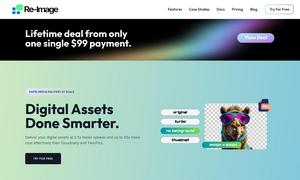Roboflow

About Roboflow
Roboflow is an innovative platform designed for developers and enterprises to create and deploy computer vision models. With features like automated annotation, cloud-based training, and adaptable deployment options, it ensures quick, efficient workflows. Roboflow enables users to accelerate their machine learning projects effortlessly.
Roboflow offers flexible pricing plans catering to varied user needs, ranging from free access to premium features. Users can start with a free tier that includes essential tools, while higher subscription levels provide advanced functionalities and API access, enhancing the experience for businesses and developers alike.
Roboflow features a streamlined user interface that enhances the browsing experience. With intuitive navigation, clear access to tools, and responsive design, users can easily manage datasets, train models, and deploy solutions. The platform prioritizes usability, ensuring that even novices can benefit from its comprehensive capabilities.
How Roboflow works
Users begin with Roboflow by signing up and onboarding through an easy interface. They can then upload images, utilize AI-assisted annotation tools, and create datasets effectively. After categorizing data, they can train models using the platform's cloud infrastructure and assess performance, ultimately deploying models to various environments.
Key Features for Roboflow
Automated Annotation Tools
Roboflow's automated annotation tools streamline the data labeling process, significantly reducing time and effort. By utilizing advanced AI technology, it enhances productivity for developers and companies working with computer vision, allowing them to focus on building innovative models rather than spending hours on manual labeling.
High-Performance Deployment Solutions
Roboflow provides high-performance deployment solutions that enable users to run models efficiently in various environments. This flexibility allows developers to deploy applications on devices, at the edge, or via APIs, ensuring optimal performance and scalability, making Roboflow a go-to platform for computer vision projects.
Cloud-Based Model Training
Roboflow's cloud-based model training infrastructure allows users to leverage powerful GPU resources for training their computer vision models. This feature ensures fast iterations and scalability, empowering engineers to achieve higher accuracy and better performance without the need for extensive local hardware investment.








